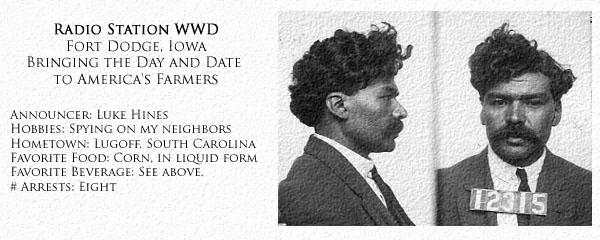Radio Station WWD
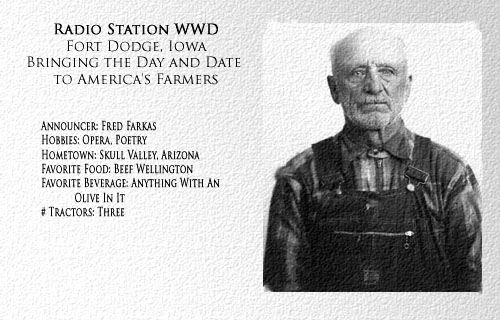 From the collection of Dead DXer Ken Quincy, now a resident of Union Cemetary in Funk, Ohio,
e have an entire set of QSL cards from Radio Station WWD in Fort Dodge, Iowa.
From the collection of Dead DXer Ken Quincy, now a resident of Union Cemetary in Funk, Ohio,
e have an entire set of QSL cards from Radio Station WWD in Fort Dodge, Iowa.
Few DXers have heard of WWD, the prototype for what eventually became WWV and WWVH. To understand the purpose of this station, you have to understand a little about agriculture. Prices of agricultural commodities have always been connected to the day of the week. However, as there was little variation in their day-to-day life, farmers often had trouble remembering what date and day of the week it was. In the late 1940s, the Agriculture Department came up with the idea of a using a shortwave station to keep farmers informed of the current date and day of the week.
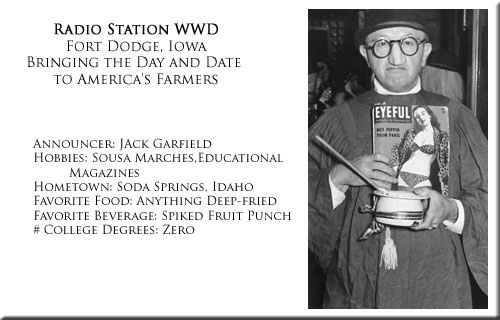 WWD went on the air on 17 February 1939 with a format of time pips once a minute and an
announcement of the current date and day of the week at the top of every hour. (e.g.
WWD went on the air on 17 February 1939 with a format of time pips once a minute and an
announcement of the current date and day of the week at the top of every hour. (e.g. The date,
at the tone, is 15 July 1940. Today is Wednesday.
) A full station identification was given once
a day, at midnight Central Standard Time, when the date changed. Early records indicate that using the
GMT (UTC) date wasn't even considered, probably because most American farmers were not familiar with it.
As there are more farmers in the Midwest, the Central time zone was chosen over Eastern, despite political
pressure from a California senator on behalf of west coast grape growers who wanted to use Pacific Standard Time.
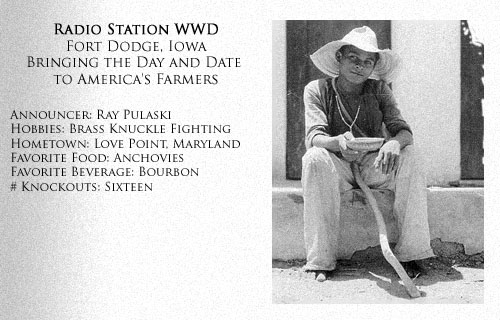 WWD broadcast on the standard carrier frequencies of 4, 8, and 16 MHz (plus or minus 25 khz for drift).
WWD broadcast on the standard carrier frequencies of 4, 8, and 16 MHz (plus or minus 25 khz for drift).
The station was on the air for less than three years. When the United States entered World War II, the transmitters were turned over to the new Voice of America and moved to Great Britain and then to North Africa, where they were destroyed in a Italian bombing raid in July, 1942.
Of course, automation didn't exist in 1939, so the station employed five announcers who worked in
shifts to do the hourly announcements of the date and day of week. The announcers were also responsible
for saying beep
at the top of each minute. In order to gain an audience share, WWD attempted
to turn these five announcers into radio personalities - not an easy thing to do when that personality can
only be displayed in a date announcement once an hour and saying beep
once a minute.
Nevertheless, each announcer did develop his or her own distinctive style of saying beep
.
Fred Farkas was especially popular with listeners for his deep, bassy, beeeeeep
, while
Jack Garfield attempted to mimic a sheep so that his sounded more like bleeeeep
.
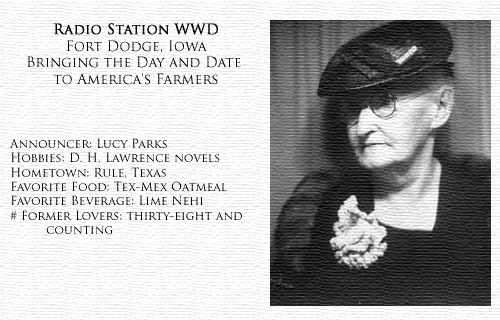 As part of this publicity campaign, WWD issued five different QSL cards, one featuring each
of the five announcers. A DXer got the card for the announcer who was on duty at the time his
reception was made. Everyone tried to get a complete set, but WWD intentionally made this difficult
by having the announcers work unpredictable, rotating shifts. Plus one of the announcers, Sally Parks, only
worked if the announcer on duty needed to take a bathroom break. As a result, very few DXers got the entire
set of WWD QSLs.
As part of this publicity campaign, WWD issued five different QSL cards, one featuring each
of the five announcers. A DXer got the card for the announcer who was on duty at the time his
reception was made. Everyone tried to get a complete set, but WWD intentionally made this difficult
by having the announcers work unpredictable, rotating shifts. Plus one of the announcers, Sally Parks, only
worked if the announcer on duty needed to take a bathroom break. As a result, very few DXers got the entire
set of WWD QSLs.
The QSLs were part of the attempt to create unique identies for each of the announcers. Thus, we have
Luke Hines, the "bad boy"; Fred Farkas, the refined one; Jack Garfield, the party animal; Ray Pulaski,
the impish barroom brawler; and, of course, Lucy Parks, the free spirit. Luke's QSL is a different size
than the others as he arranged to have his printed at a prison print shop he had once worked in for two
to four years. 